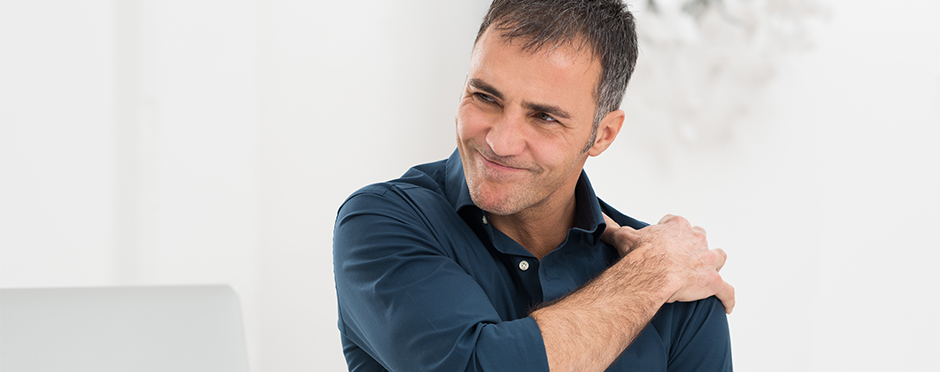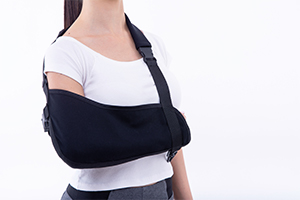
What to Expect when Recovering from Rotator Cuff Surgery
1 CommentThe rotator cuff is made up of four small muscles that surround the shoulder joint. These muscles work as stabilizers to keep the ball of the humerus (which is the long bone in the upper arm) in the right position at the center of the shoulder joint.
Rotator Cuff Injury
The muscles in the rotator cuff can become torn partially or completely as the result of either an injury or everyday use. Typical symptoms of rotator cuff tears include pain and loss of strength. Pain is most frequently noted at the front of the shoulder and tends to increase when trying to sleep. Weakness related to rotator cuff tears make it difficult to raise the arm and complete overhead activities. Many people can successfully manage rotator cuff tears with therapy and exercises, but sometimes surgery is necessary.
Surgery for rotator cuff tears involves placing sutures to repair and reconnect the rotator cuff muscle(s). The surgery is typically an outpatient procedure. After the repair is completed, the goal is to protect the healing repair by wearing a sling and following precautions. Eventually, therapy is started to restore use of the shoulder.
Precautions After Surgery
There are some basic guidelines that most surgeons recommend in order to protect the new repair for the first several weeks. At the most basic level, it is recommended that patients don’t use the affected shoulder. This means avoiding raising the arm, pushing up from the arm and not carrying items with the affected arm. Hence, the sling immobilizer (see image) to prevent patients from trying to move their shoulder.

Sling Immobilizer
Wearing the Sling
Most physicians have their patients wear a special sling right after surgery, with the typical length of time being around six weeks based on the surgeon’s preference and the extent of the repair performed. Patients may not like wearing the sling, but it plays an important role for protecting the healing repair. Patients initially may require some assistance to put on the sling, but most people get the hang of it pretty quickly.
What to Expect with Therapy
Physical or occupational therapy is an important component of recovering after a rotator cuff repair. The start of therapy depends on the preferences of the surgeon and the type of repair. The therapist will gather information regarding the recommendations of the physician as well as the patient’s goals, as this will help the therapist develop a program to support the patient getting back to using their shoulder. The typical length of therapy following rotator cuff repair is about 12 weeks, but can vary based on extent of surgery and the type of activities the person is returning to. The first visit to physical or occupational therapy usually includes:
- Learning about the patient’s history
- Starting to gently move the shoulder
- Checking the fit of the patient’s sling
- Looking at the incision/scar
- Addressing any pain
- Education for home program exercises
Initially, therapy focuses on getting back range of motion in the patient’s shoulder. It is also important to work on strengthening the other muscles in the arm. The next step is to slowly advance the use of the affected shoulder. The patient’s therapist will move them through a program that takes into account tendon healing, daily activities and the muscle activation required to overcome gravity and eventually add weight.
Returning to Normal Activities
The therapist will continually check in regarding daily activities to make sure the patient is following precautions. Most people will start getting back to basic daily activities, such as using their arm for eating, after the sling is discontinued around six weeks. Patients may be surprised when it takes 2-3 months to get back to reaching up into a cupboard, reaching behind the back or sleeping on the affected side. This is normal and will get better with more time. Progressing to sports or activities requiring lifting more weight is not expected until six to eight months following surgery, based on the recommendations of the surgeon. Patients should be aware that recovery will take a while, and to be patient with the healing process in order to achieve their goals.
Problem Solving Daily Activities While Healing
Some simple ideas can make daily life a little easier when recovering from surgery, including:
- To wash under the surgery arm, lean forward to let the arm dangle away from body. This will open up the armpit without actively moving the arm.
- Patients may find it more comfortable to sleep in a recliner for the initial few weeks following surgery.
- Wear shirts with front buttons and place the affected arm through the sleeve first.
- Remember to keep icing the arm for increments of 15-20 minutes at a time.
- Have someone else open containers, including medication containers.
Getting Back to Doing the Things You Love
Ultimately, patients will get back to doing their daily activities using their shoulder again. It takes a little time and some hard work, but the therapists at Athletico are here to help all patients reach their goals on their recovery journey.
If you would like to learn more from an Athletico physical therapist, please use the button below to request a free assessment. Free Assessments are available in-clinic or virtually through our Telehealth service.
The Athletico blog is an educational resource written by Athletico employees. Athletico bloggers are licensed professionals who abide by the code of ethics outlined by their respective professional associations. The content published in blog posts represents the opinion of the individual author based on their expertise and experience. The content provided in this blog is for informational purposes only, does not constitute medical advice and should not be relied on for making personal health decisions.

1 Comment
Lloyd Bronson
I am thankful that your article provides the symptoms of rotator cuff injuries. My son often struggles to carry his backpack to school. I’ll look into the options available to me and schedule a surgery.